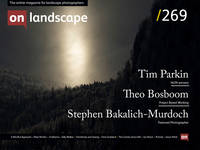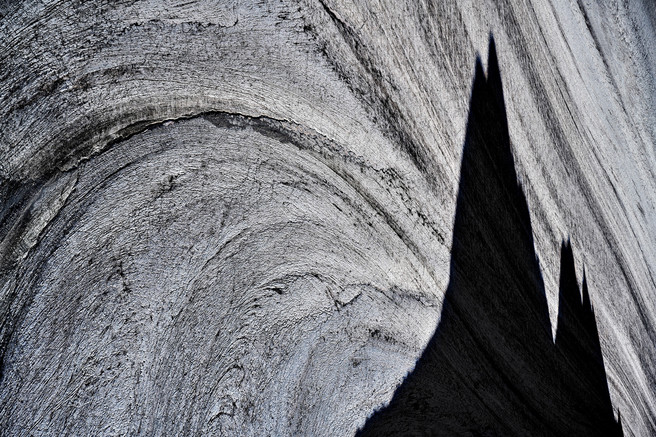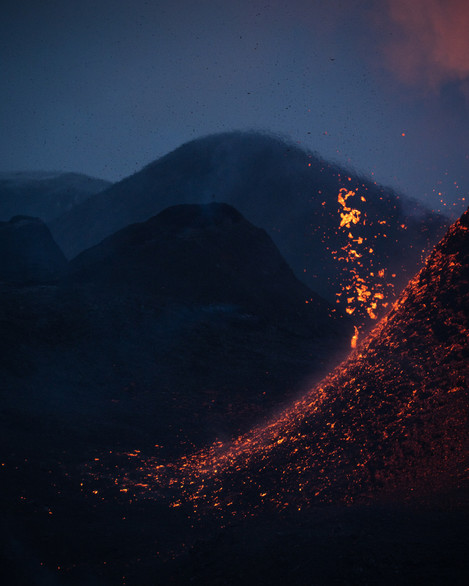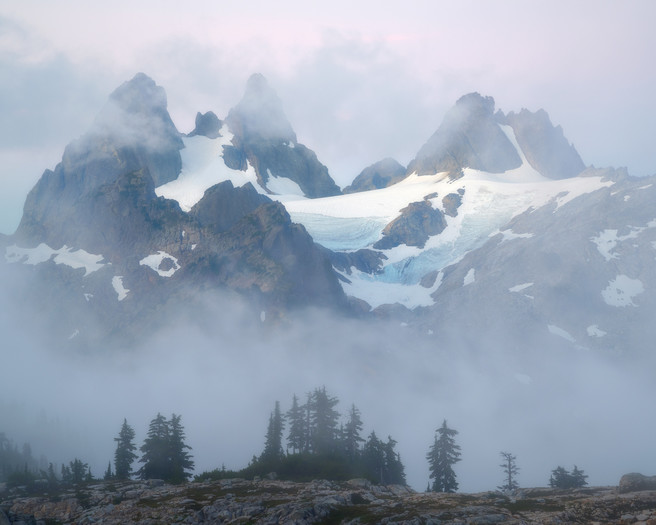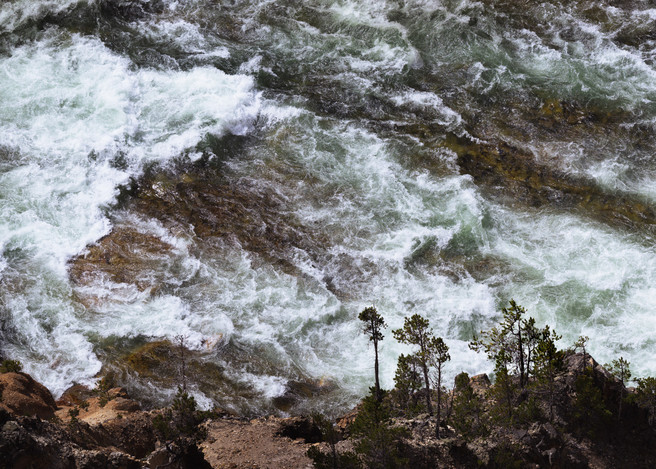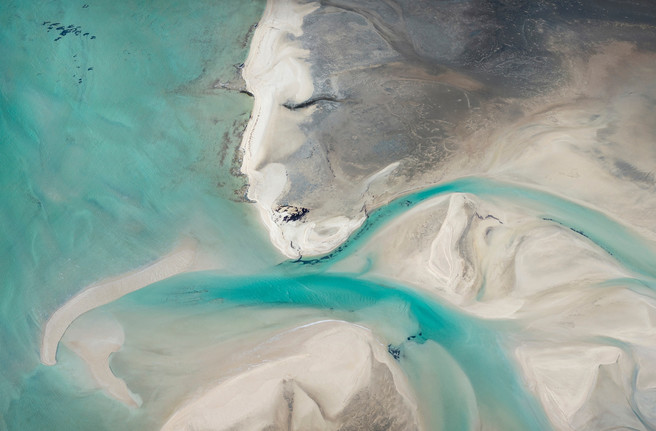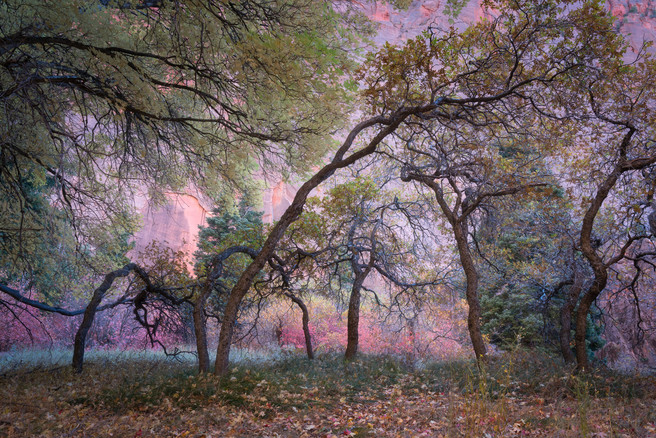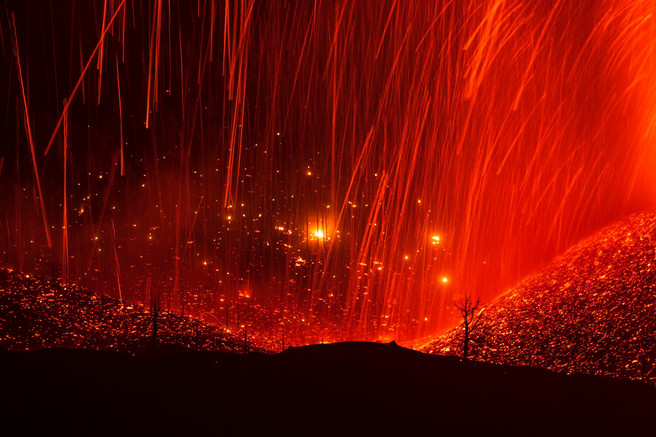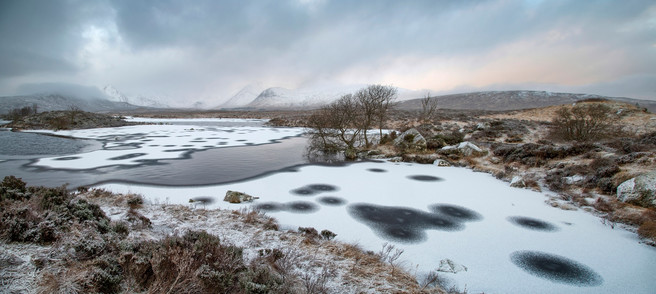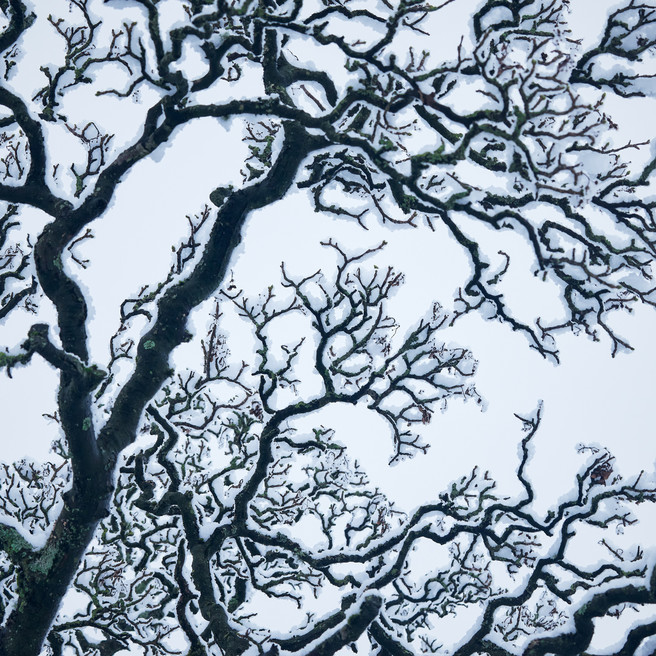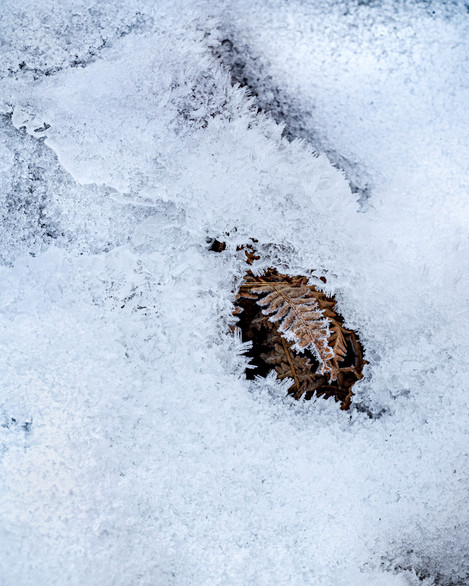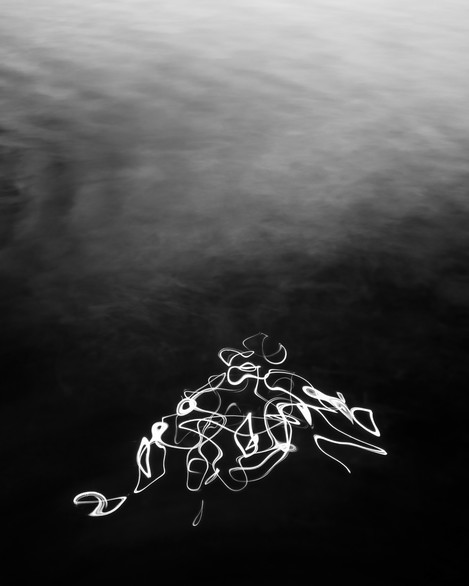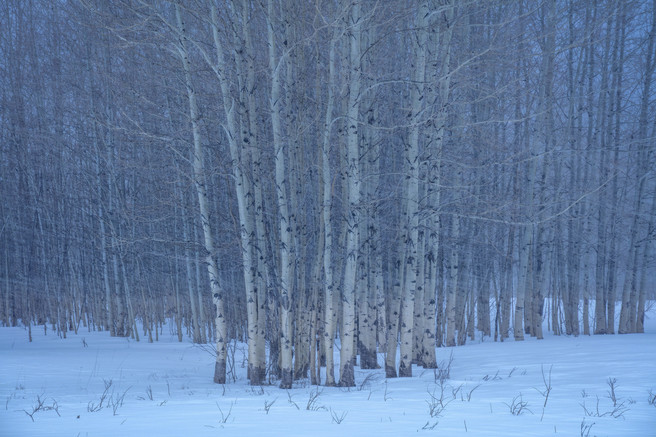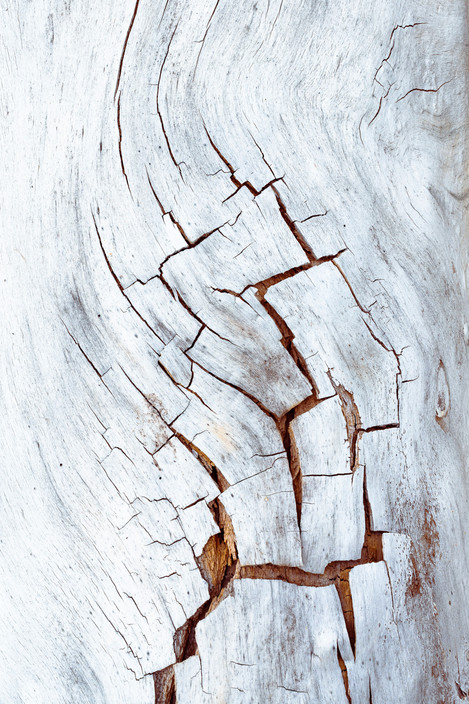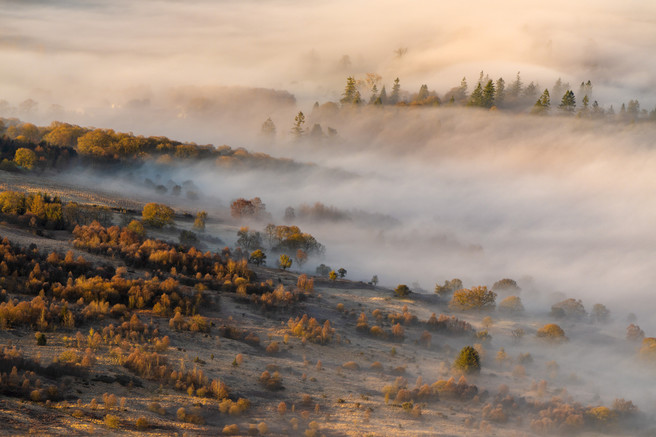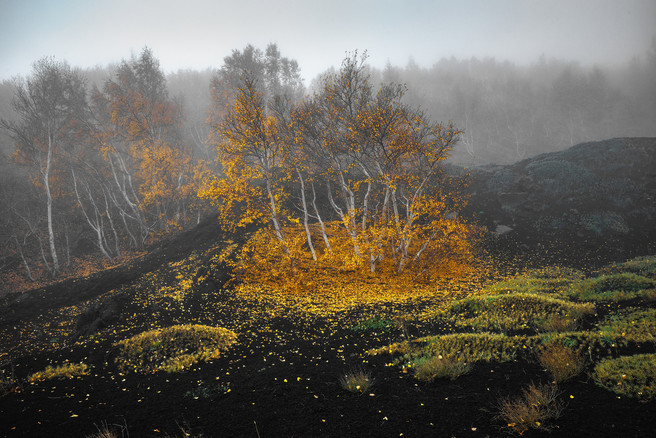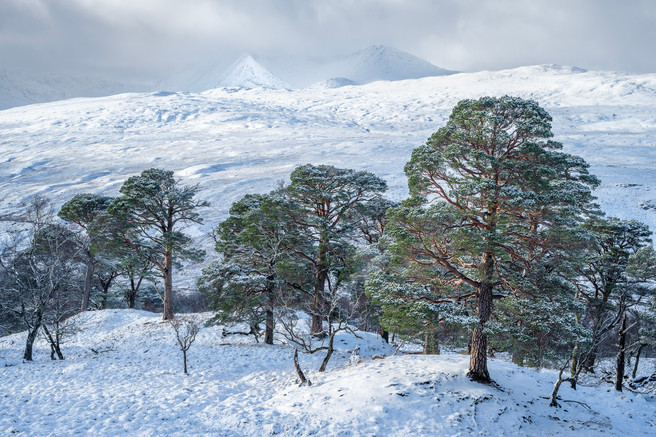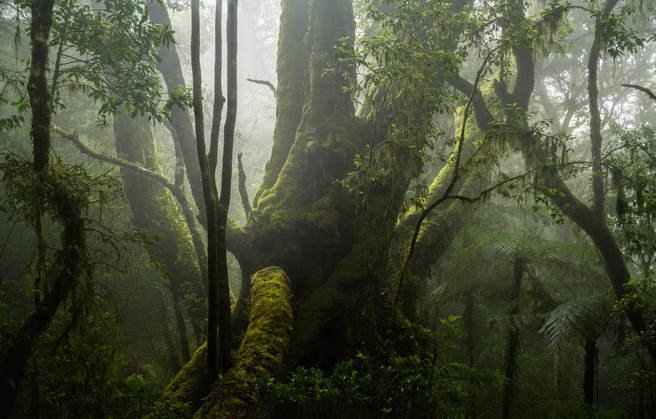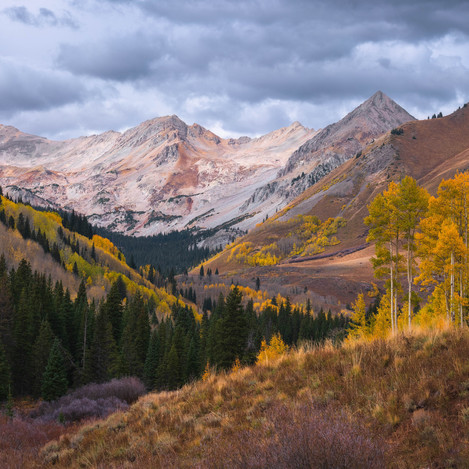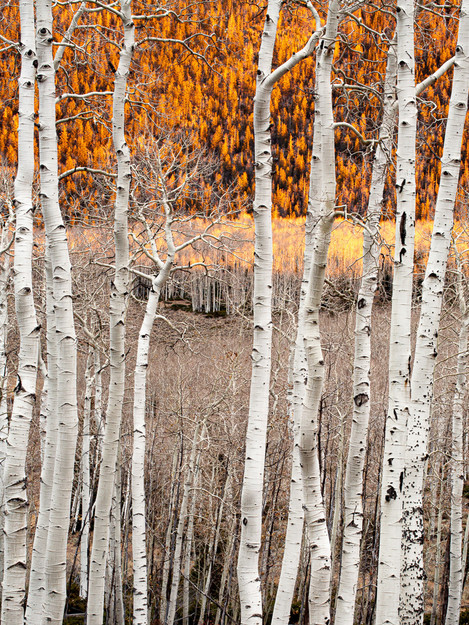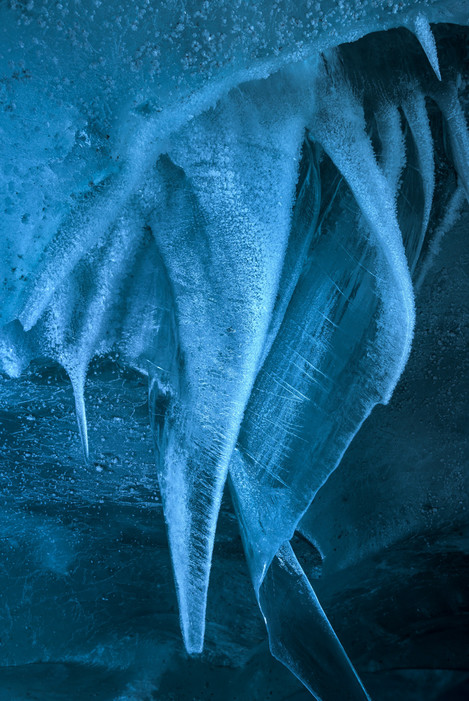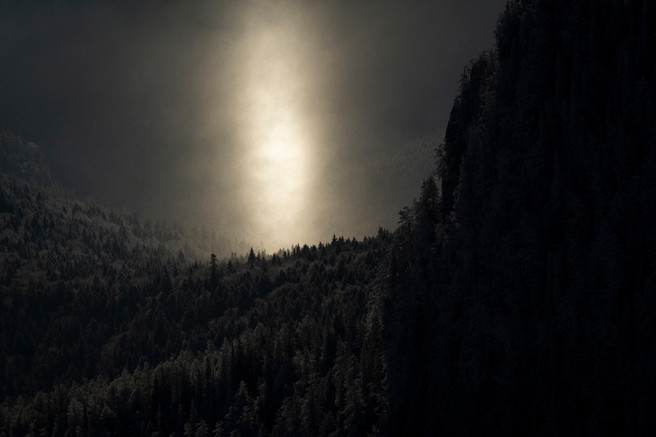An overview and look at some of the entries

Tim Parkin
Amateur Photographer who plays with big cameras and film when in between digital photographs.
The Natural Landscape Photography Awards are all wrapped up and I’m sitting here compiling the book to go with the 2022 results. I thought it would be interesting to recap on the process and show some of the winners and also some of my own personal favourites from our competition finalists.
Going into the competition this year, we weren’t certain of its success. We had done so well in the first year but we knew that there were many people who had entered to support the business but who might not become regular entrants. Fortunately, the idea of the competition seems to have gained some solid traction, and although were slightly under last year's submissions, it was only by a small fraction. We had nearly 11,000 photographs submitted from 1,200 photographers representing 55 countries. Due to our success in the first year, we were able to attract sponsors and prize money totalling nearly $40,000.
The Judging
Getting the entries is one thing, but honing these down to a smaller and smaller group until eventually choosing a single winner is another. I’ll give you a spoiler - ultimately, we couldn’t! More on that later though.
For the first round, we went through the images to filter out those that we knew wouldn’t be in the running for the winner of the competition. These were images that had fundamental flaws with composition, technique, etc. One the second run, we had a good idea of the quality of the top 10 or 20 percent of entries and so it became easily to eliminate those that were in the bottom 20-30 percent.
We managed this process by each of the organisers scoring every image and combining those scores together. Images that did consistently well across judges went through to the main judging and images that were a particular favourite of each judge automatically went through as well.
After reviewing the ‘borderline’ images manually to make sure we didn’t miss anything that may have interested the main judges, we compiled a set of images and sent them out to our eight judges.
The Judges
On our panel were a few judges from last year but the majority were new. Our panel was Sarah Marino, Alex Noriega, Sandra Bartocha, Paul Zizka, Orsolya Haarberg, David Thompson, David Clapp and Theo Bosboom. You can find out more about these judges on the NLPA website here.
These eight judges then had the task of reviewing all of these images and giving them a score. We used Lightroom for all of our judging, this allowed judges to go back and review scores and adjust things quickly. They can also zoom in and create panels of images to contrast and compare. Exporting the scores from Lightroom allowed us to compile them into small subset, from which we had a live meeting with all of the judges to pick their personal favourite images for each category. These sessions allowed the judges to get used to image choices and so be familiar with all of the images for the final, live judging round.
And this is where the final decisions get made and everybody’s subjective opinions on what should be the best images collides in an effort to come out with a single objective outcome.
You would think that there would be some general agreement in what makes the best photographs, especially when you get a range of people with a great deal of experience and visual vocabulary. However, art is ultimately subjective and the disagreements and discussions at this final stage of voting were extensive.
Fortunately, for most of the categories we were able to choose a first, second and third place. However, for the photograph of the year, we had a strong split between the four judges that no amount of discussion could break. As the images made a really strong pairing, we decided to try split the award between the two entries. You can see these two below from Jim Lamont and Philipp Jakesch.
Jim Lamont, Canada
The photograph shows the shadow cast by some peaks on the surface of the Lowell Glacier, in Kluane National Park, Yukon Territory, Canada. It was taken on a July morning in 2022 from a Cessna 172 as part of a decades-long project on glaciers. With climate change the Lowell Glacier, like most glaciers in the world, is crumbling into ruin, its surface gradually disappearing beneath dirt and rubble as the ice melts. The image is intended to suggest the wave of destruction that will overwhelm us unless we stop dumping carbon into the atmosphere.
Philipp Jakesch, US
When I decided to visit the volcanic site on the Reykjanes Peninsula, I was uncertain how it would be and how dangerous it was. Luckily we had good conditions and good filters to protect our lungs. The Image called "Ardor" is one of my favourite images from the volcanic series because of the small fragment of this huge area. The blue hour threw ambient blue light on the background layers, with the orange lava standing out even more. The 1,100°C hot liquid earth is frozen in time. Even though my distance to the erupting volcano was about 500 Meters, I could feel the radiating heat with every outbreak.
MAIN CATEGORIES
We changed our categories this year in order to try to differentiate between the intimate landscapes and grand scenics more clearly, and we also introduced an “Abstracts & Details” category, for those less representational and textural images.
Grand Scenic - Kevin Monahan
Our grand scenic winner wasn't an epic wide angle shot but it definitely worked under the "Grand" heading. The breaking mist on Chimney Rock in the Alpine Lakes Wilderness is sublime but it was the combination of this with the forested foreground that caught the judges interest. The layering effect of the long lens was used effectively to create something a little different and just the right moment of mist was chosen to enhance the final composition.
Kevin Monahan said “For many years I used to get so caught up in capturing the scene I originally had envisioned that I would miss all these other opportunities around me. Once I learned to let go of that, photography became so much more enjoyable and fulfilling.
For this backpacking trip in the Alpine Lakes Wilderness, one of the photographs I was hoping for was of these mountains reflecting in a calm alpine lake. After hiking 11 miles and climbing close to 5000 feet, I reached the top and realized the chances of capturing that were slim. We were engulfed in fog, couldn’t see anything around us, and there was too much wind.
Throughout the evening and entire night these mountains were hidden and no pictures were taken however during sunrise the clouds finally began to part, revealing these impressive peaks. I decided not to walk down to the lake but instead focus on these two mountains that really commanded the scene and my attention. The conditions were magical but quickly fleeting. Despite this being nothing I originally anticipated, I couldn’t have been happier photographing this scene out in the backcountry.”
Intimate Landscape - Spencer Cox
Our intimate landscape winner bucked the trend for photographs looking like watercolour paintings by looking more like a Romantic Era Oil Paining of a tree line and stormy sky. The elevetated view of the iron stained, turbulent river recalls Constable's expressive brush strokes and with an aged varnish effect to boot. It's the way the trees present themselves as viewed from the side, rather than above, which seals the illusion, for me anyway.
Spencer Cox said “When I first saw this scene, the warm, earthy tones of the riverbed reminded me of 19th-century landscape paintings. Even the fierce rapids of the Yellowstone River felt like gentle brushstrokes when viewed from afar.
I knew that I could play with scale and perspective when I composed this photo, as the trees appeared to stand against a cloudy sky rather than a swirling river. It can be a difficult photograph to parse without a second look.
This photo breaks many of the supposed ‘rules’ of landscape photography. It uses midday sunshine rather than Golden Hour light. The main subjects—the spindly trees along the riverbank—are at the bottom of the frame near the corner. And, to take the photo, I pointed straight downward from the edge of a canyon, not forward at a classic scene.
These unusual factors, though, are what give the photo its personality. I’ve always loved searching for offbeat, intimate views of nature like this wherever I go. It can be the best way to tell the story of a landscape.”
Abstracts & Details - Mieke Boynton
One of the standout images from the competition in my opinion, and of quite a lot of international press it seems (it featured pride of place in Der Spiegel print edition!), Mieke's aerial is more representational than abstract in presentation but it's the pareidolic effect which draws attention the most. The shape of the sandy beach and black steam bed broken by fresh sand, the promintory of a nose and black sand mouth builds the convincing shape of a serene female face.
Mieke Boynton said “This photo, "Ocean Deity", means so much to me. It was a gift. And she has a deeper meaning... if you look closely, her eyes have been "sewn shut" by tyre tracks. More than 6,000 marine turtles live in Gutharraguda/Shark Bay, including the globally endangered green turtle (Chelonia mydas) and loggerhead turtle (Caretta caretta). When people drive along the beach in 4WDs, they put the lives of turtles at risk, as this is where they nest.”
Some Personal Favourites
I’ve spent the last couple of weeks getting the bulk of our second book designed and I’d like to share a some of my favourite images from it. Apart from Brian Pollock’s photograph, which came first in the Frozen Worlds category and Eduardo Blanco Mendizaba, who came second in the Nightscape category, none of the other images placed. Hopefully you can see why the book is so important to us as there are so many other great images that wouldn’t get any exposure without it. It may take a lot of work but I think people enjoy it.
Our next book is being printed on the 15th of January and we’ll be taking discounted pre-orders in the new year (join our mailing list to keep updated). We’re using a printers near my parents home and I’ll be able to work on press during it’s printing. Joe Cornish, Alex Nail and others I know have used the printers so I’m very confident we’ll have a product ready to ship around mid-February. If you would like to see more images from the competition, take a look at the galleries at the Natural Landscape Awards website.
Lawrence Pallant
In a stunning example of complex composition, Lawrence has recognised the potential of a scene and found the perfect position that allows all of it’s elements to play a part in a coherent, if complex, whole. The key two trees in the centre, lean over the central smaller tree as if in a dance. The two smaller trees on the left bow in their presence. All of this would still appear off balance if it weren’t for the reaching arms of the maple on the far left. Even the right side is ‘closed’ nicely by the spiralling trunk of the last tree. And we haven’t even mentioned that glorious colour of sandstone, desert varnish and dogwood. A textbook example of resolving complexity
Eduardo Blanco Mendizaba
We presume that in order to enter the competition Eduardo must have survived his encounter with his volcano but the apparent proximity still leaves me in some doubt. The volcanic bombs spray like a fountain in front of the camera and the background littered like a aerial scene of a Dresden memory. It's the few stripped trees that give some sense of the epic scale of what we can see though. A truly sublime scene.
Andy MacDougal
Building an engaging wide panorama is not simple. To create something that moves beyond a literal snapshot requires that the photograph has multiple engaging components and then stitches them into a whole. Andy’s use of the visually intruiging circular melt holes in the snow covered ice is a great major theme linking the left and right sides. The sweep of the foreground closes the left corner. The promintory with a small bog myrtle bush and break in the ice crerates a focus mid point. The hollow of the glaciated valley behind the moorland finishes your journey across the picture.
Josh Glaister
Looking up through a wintery tree allows each branch to appear outlined in snow. The illusion separates and emphasises each stroke of a branch, creating a filigreed abstraction. The composition makes great use of this effect, the main branch boldly arching over the left and top and the smaller branches filling the spaces below.
Pete Hyde
Most of this photograph is playing a supporting role, a canvas onto which the frost limned hole through which a rich brown fern frond peeks. The fine needles of the hoar frost reach to close the gap, set off against the dark of the hole. The background isn't plain though, there's enough texture and pattern to keep our interest; an edge of ice sweeps left from the elliptical hole and larger frost needles grow above.
James Rodewald
The meaning of “Photography” is “Writing with Light” and what a brilliant example of that we have here. The reflection of what I think is the moon dances in the darkness, dragging a pyramidal light trail across the sensor. The top half of the image just about reveals the canvas to be the side of a flowing river. Amazing what you can do with a four year old phone camera (Galaxy S9)!
Louis Ouimet
It's often been said that you can consider a forest scene as an environmental portrait, imbuing the trees with an animus and interpreting their relationships as part of their expressive nature. Here we see a collection of aspen clustered together like penguins in the cool light of a snow storm. In reality, the aspen cluster because they are all a single organism, trunks sprouting from rhizomatic roots to help protect the whole against poor environmental conditions. Whichever story you read into a picture, it still needs to stand on it's aesthetics and this moodily lit, winter photograph does just that.
Jason Pettit
As the top, bleached layer of wood on this tree dries and shrinks, it cracks to reveal the richly coloured, fresh wood beneath. It's the sweeps and curves of the grain of the wood and the geometric cracking that create the visual intrigue though, an angular mandala.
Richard Fox
A simple scene of low, late winter sunlight striking across a misty tree clad hillside stands out because of the range of visual interest at play. The scene layers itself from open foreground to mist hidden far distance with rolling banks of trees hidding a disappearing as we move back in the frame. Each area holds something unique to linger on, from a small plantation to a partly seen farmhouse.
Mauro Tronto
This isolated patch of birch trees appears to have lost its leaves all at once, almost too many for that small group. Mauro has desaturated blues of the mist and background to enhance the autumnal colours but it’s the contrast of the intense yellow and black soil and rock that plays the main role.
Brian Pollock
If we wanted to be picky, there are a few ‘flaws’ in this composition; the band of hillside covers the mountains in the background; the foreground snow is ‘messy’; the main tree sits a bit too far to the right. This just proves that the whole is often more than its parts. This image just works, and works exceptionally well. The judges were entranced by the light on the main scots pine, intrigued by the glimpse of mountains beyond and drawn in by the natural balance of the composition.
Julien Parrot
A vast behemoth creeps out of the forest like an extra from Stranger Things. Julien's photograph makes a rare representation of the rainforest, as can be noitced from the palm trees at the bottom right. The success of the image comes from that theatrical lighting illuminating the old growth tree in the center of the image. The front limb looks to be stepping forward, about to push the triple limbed sapling aside.
David Kingham
With a flat, grey sky, many photographers might relax for the day - putting the urgency aside for a possible evening light show. But there's no such thing as bad light, even for the grand scenic genre. It does mean that your photo has to work even harder compositionally and that is what David's has done here. The bracketing right had aspens on a curved grassy bank; the sweep of conifer blending into more aspen on the left and behind the closest aspen sits the start of a bank of mountain range, rendered in subtle tans and pinks
Veronica Arcelus
The intensely rich, golden light on the trees in the background and bleached white of the trunks in the foreground suggest some dramatic post processing steps but the raw shows that this is just a case of a bit of added contrast to set off the beautifully composed, remarkable subject set off by that majestic lighting. The layering of the background as it transitions from groups of trees to illuminated tree tops and finally to the hillside of fully illuminated golden trees draws the eye through the background.
Lukas Moesch
Icicles can be fascinating subjects to photograph but they mostly confirm to a small range of shapes. Lukas' ice forms, folding and draping like cloth, intrigue us about their formation. The layer of hoar frost encasing them add to the textural richness. A mysterious and monochromatic still life image that keeps our interest.
Dorin Bofan
The variety of atmospheric optical phenomena make for a wide range of visually stunning apparations but they rarely make successful photographs. Dorin’s example certainly does though and it achieves this by being building a great photograph around the phenomenon first. The almost black tree clad cliffside acts as a strong vertical mirror to the intense subsun lower pillar, caused by the freezing fog. The dark wooded valley around the pillar makes a perfect frame.
- Philip Jakesch
- Jim Lamont
- Kevin Monahan
- Spencer Cox
- Mieke Boynton
- Josh Glaister
- Lukas Moesch
- Julien Parrot
- Richard Fox
- Dorin Bofan
- Veronica Arcelus
- Pete Hyde
- James Rodewald
- Jason Pettit
- Andy MacDougall
- Louis Ouimet
- David Kingham
- Lawrence Pallant
- Mauro Tronto
- Brian Pollock
- Eduardo Blanco Mendizaba

